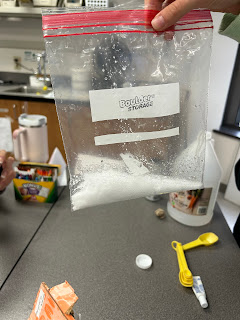What did you learn this week?
- Are you able to relate what you learned to what you already knew?
- How can you apply what you've learned to your teaching in the future?
Cold Soda:
Cold drinks have condensation, in glasses, plastic water bottles
Kids may ask: Why is my drink leaking?
Plunger station:
Sticking to the table because of suction, hard to pull up or get unstuck
air & rubber, defining suction, what materials can suction, compression
Kids may say: why is it not sticky, but still stuck to the table?
Melting Ice:
Melted faster in the pot because steel is a heat conductor with out without being on a stove
Wood is an insulator
What is wood used for, what are pots used for, what are they made of… does metal rust?
Kids may say: there is no extra heat. Why is it melting faster in the pot?
cold adapts to different material, physical state changes (solid to liquid)
Coke FLoat:
Regular big coke is sinking, why?
Does the amount of sugar in a coke determine if it will float or sink?
Baking Soda & Vinegar
Fizzing, carbonation
Room temp to cold
Chemical reaction could have been a gas?
M&Ms
The sugar coating on the M&Ms are fading into the water, water dissolves the sugar coating
Mix in, absorb, melt but not melt
Some colors spread more because they have more pigment
What would happen if oil and water were mixed?
What would happen if colored marbles were mixed with water?
Why do different types of ingredients absorb in water?






Comments
Post a Comment